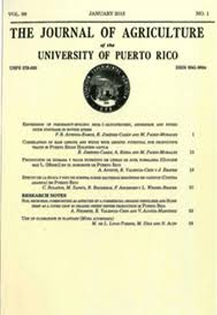Abstract
Before the Spanish conquest, there were no domestic bovines in the New World. In 1493, cattle from Spain were introduced for the first time in America. After several centuries of adaptation, our Criollo cattle evolved mostly by natural selection. These small-bodied, short-haired animals, highly adapted to the tropics formed the basis of our cattle industry during the Spanish colonial rule of Puerto Rico and during the first 50 years under the United States of America. The Criollo cattle contributed to the sustenance, economy, culture and politics of our country. Breeds selected for milk production (i.e., Holstein) were subsequently introduced to Puerto Rico, especially during the 1950s, through insemination programs and cattle importations. This introduction of improved genetics in many cases was imposed on and fused with the existing Criollo cow. After decades of absorption crossing, an improved European breed phenotype has been achieved, while certain characteristics of adaption to a tropical environment have been maintained in a portion of our cattle. These features include a slick hair coat and a superior thermoregulatory capacity, which are not found in temperate climate Bos taurus cattle. This literature review seeks to combine the historic evidence of the development of our dairy cattle industry with recent scientific information about the adaptability of these animals.

